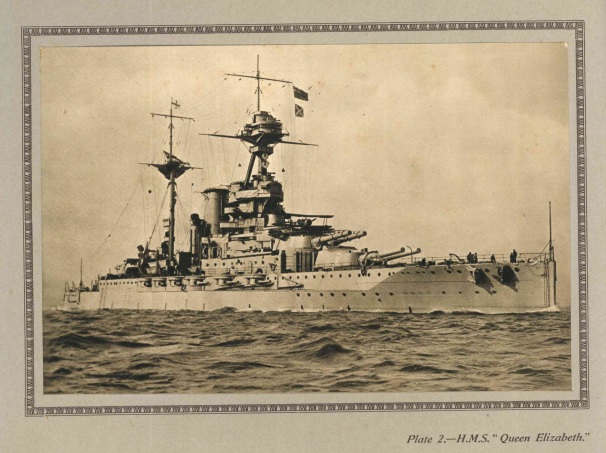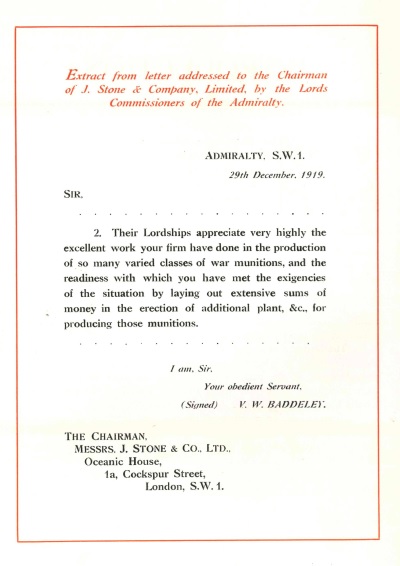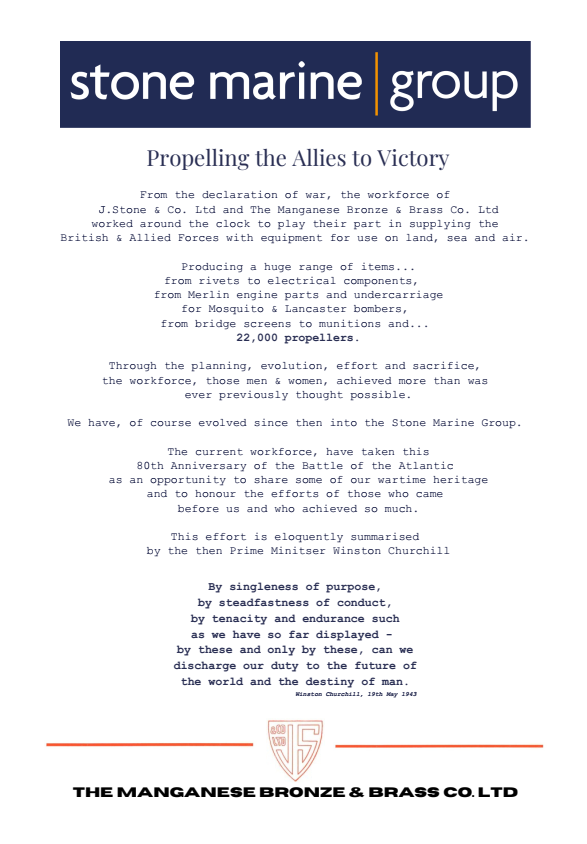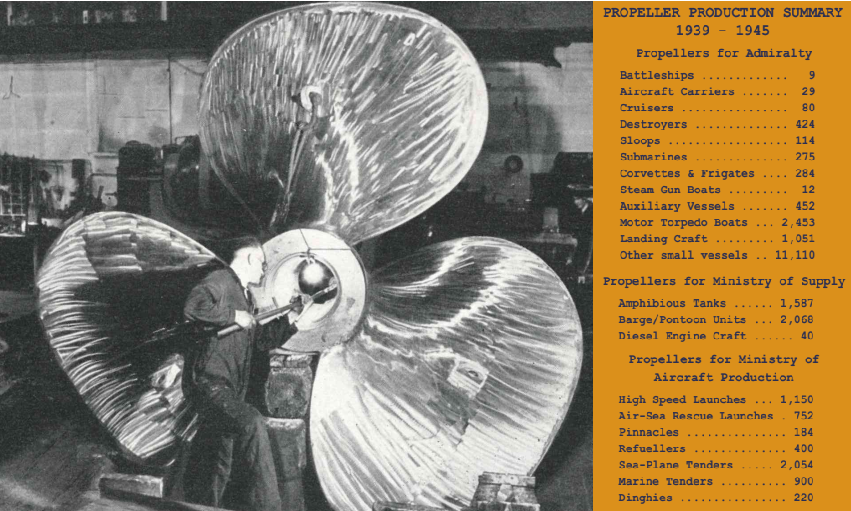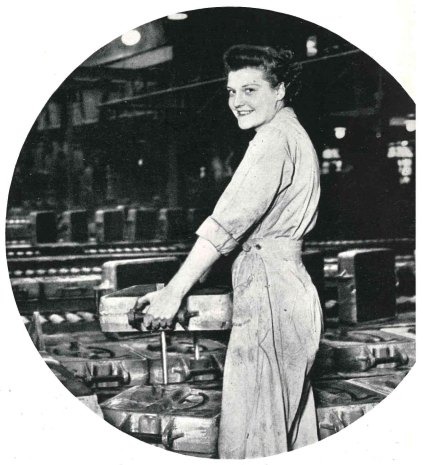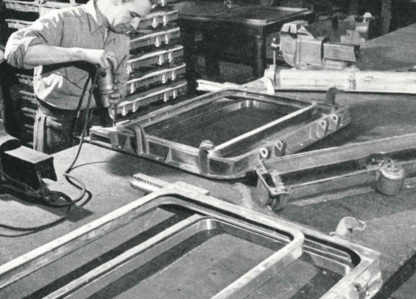As we build towards the Stones contribution to the vessels engaged in the Battle of the Atlantic, we continue our series of posts by moving the story of Stones propellers into war time production.
The British Navy was by far the biggest user of Stones Manganese Propellers in the early 1900’s.
With the advent of the turbine engine, it was recognised that this type of engine required new designs and new materials. Greater power was being delivered to the propeller and operation at higher RPM was required.
With the increase in power and RPM, new issues were faced – vibration and cavitation had to be countered. Whilst the battle with cavitation erosion of propeller parent materials continues today, many issues were solved with what was then termed a ‘greater accuracy of finish’.
Today we refer to this accuracy of finish as manufacturing tolerance. With development and research, propeller designs evolved with changes to the chemical composition of the materials used.
The success of this work is illustrated in no better way than to show how J. Stone & Company Limited were entrusted with the supply of propellers to practically every record breaking and epoch-making vessel in the British Navy.
The 1st turbine battleship, HMS Dreadnought, was fitted with Stones bronze propellers. Others include HMS Tartar & HMS Mohawk, both of which competed in their time for the record of being the fastest vessels in the world.
HMS Queen Elizabeth (pictured) and HMS Lion were both driven by Stone propellers and were chosen as flagships to Admiral Sir David Beatty.
In all over 3,350 tons of bronze propellers were supplied to the British Fleet for classes of vessel including the Battleships, Battle Cruisers, Cruisers, Destroyers & Submarines. Not only did Stones supply the British Fleet but also the Allied Fleets of France, Italy, Japan & Russia.
From our research into the Stones Archives we have put together the list below. Sadly, some records were destroyed during bomb attacks in World War 2 but many remain. Therefore, unfortunately we don’t fully understand the extent of supply to France, Italy, Japan & Russia.
The list below only begins to scratch the surface of the scope of wartime production at Stones, but we will cover that later. The number shown below with each class of vessel denotes the number of vessels supplied, many of these vessels will have required two propellers.
Battleships: 32
Battle Cruisers: 7
Cruisers: 46
Light Cruisers: 33
Scouts: 4
Leaders: 11
Torpedo Boats: 77
Destroyers: 286
Submarines: 68
Auxiliary Vessels: 89
Australian Navy: 8
Canadian Navy: 1
Royal Indian Marine: 3
Such was the importance of the Stones supply during the Great War the Admiralty noted their gratitude with a letter from the Lords Commissioners of the Admiralty in December 1919. An extract from this letter is pictured below.

